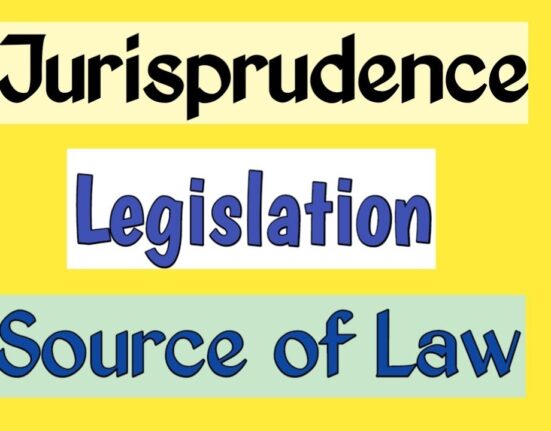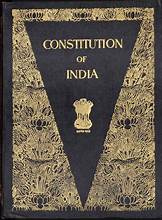Sitanshu srivastava, a fourth-year law student has written this Article “WIPO” CONVENTION 1967
Introduction
“WIPO” CONVENTION 1967 i.e. World Intellectual property organisation has headquartered in Geneva, Switzerland
and was formed on 14th July 1967. This organisation is based on Geneva it produces the
encouragement for the creativity and do the promotion for the protection of that creative idea
throughout the world, that creative idea is known as intellectual property. United Nations has
15 agencies and WIPO is one of them. In earlier times before joining United nation known as
the promoters for intellectual property but after joining the objective was reformed as the
public interest or humanitarian goal. WIPO is a unique organization among UN agencies
because much of its activities are self-funded. According to the WIPO Strategy and Budget
for 2020-2021, estimated revenue for the two-year period will be CHF 880 million, while
expenditure is expected to be CHF 768 million Organizational costs of services account for
about 95% of the turnover, WIPO said Information is available.
WIPO was created at the diplomatic conference in the year 1893 and this organisation is the
oldest organisation in the field of IP protection.
Origin and History of WIPO
“WIPO” CONVENTION 1967 was formed and designed to give protection to the various Intellectual properties
like both industrial property and material and musical and artistic works. The signing of
the convention in Stockholm in 1967 resulted to the establishment of this organisation which
began its operations in 1970. In 1974 WIPO becomes the specialised agency of the United
Nations and it is headquartered in Geneva. The Trace of the WIPO can be found to 1883
when 14 countries were involved in the signing of the Paris Convention for the protection of industrial
property which later created into IP for innovation, trademarks and industrial designs.
Convention was a big help to the inventors to gain protection for their ideas and works
outside their home countries. The Berne Convention of 1886 obliged member governments to
provide passive protection for works carried out in other member states. In 1893, the two
organizations merged to form the Joint Bureau for the Protection of International Intellectual
Property (BIRPI), headquartered in Bern, Switzerland.
In 1960, BIRPI (Bureaux Internationaleux Réunis pour la Protection de la Propriété
Intellectual) moved its headquarters to Geneva.
Objective
The World Intellectual Property Organization
(WIPO) has two main objectives. First, it aims to promote the protection of intellectual
property through international cooperation, it currently administers more than 20
international treaties on intellectual property Second, WIPO promotes cooperation
cooperation is weak in agreements on the protection of trademarks, patents and artistic
publications at meetings between philosophical societies including Paris-Bern Vipo in
enforcing the protection of rights and property -Organization’s activities expanded with the
the signing of cooperation agreements with the World Trade Organization and the rise of
electronic commerce and the development of the Internet tasked WIPO to settle disputes over
the use of Internet domain names. More than 180 countries are members of WIPO. The
General Assembly, which meets every two years, is its major policy-making body. WIPO also
hosts a biennial conference when the organization’s budget and programs are decided. Over
170 nonprofit groups have observer status.
Strategic Goals Of WIPO
“WIPO” CONVENTION 1967 is based on the 5 years Based Plan format, WIPO sets strategic objectives, operational
activities and milestones for 5 years and plans its development accordingly.
The main implementation objective is to enhance research and development (R&D) through
joint efforts in neglected tropical diseases (NTDs), malaria and tuberculosis using intellectual
property (IP) Activities implementation includes the establishment and continuation of
special programs of research training in other tropical diseases are important part of the work
is the establishment of new partnerships that can meet priority needs and provide support and
assistance. This includes increasing the number of companies that can provide assets and
support for WIPO activities. Key measures for this objective include establishing at least
eight new working groups per year and developing a comprehensive IP management plan for
two or three associations per year.
Goal 2
Goal 2 of the project is to rapidly produce promising chemicals or leads. To this
end, implementation efforts involve helping collaborators secure funding from donor
agencies, which will accelerate the development process and enable the selection of high-
potential projects developing compounds or leading the research process. Highlights of this
the goal includes annual networking between two to three partnerships or collaborations with
recognized funding sources.
A third implementation objective is to improve global capacity for intellectual property
management and biological R&D. Measures include supporting member organizations in
capacity building and research funding at leading research institutions. The first significant
element of this goal is to provide two to four days of training breaks per year.
Strategic Objective 4 highlights the importance of using intellectual property (IP) in
promoting innovation in neglected tropical diseases (NTDs), malaria and tuberculosis (TB).
Increasing knowledge on how IP encourages R&D in these areas is one of the initiatives to be
implemented. The emphasis is on a technical approach to the information at hand. Key
elements of this goal include creating a user-friendly website that aggregates all available
information to help create partnerships and continually update it based on usage information
Also, build it you aim to publish at least four articles in related journals and journals, and
give at least six presentations at thematic community conferences.
Objective/Missions of WIPO
“WIPO” CONVENTION 1967 aims to establish a comprehensive, balanced and effective system for the protection
and enforcement of intellectual property rights. Article 1 of the 1974 Agreement between
WIPO and the United Nations state: “To accelerate economic, social and cultural
development”; This is a modified version of what we said earlier, and it came about because
WIPO is part of the UN, and the UN is committed to advancing global society by working for
a larger group of people. WIPO aspires to foster an environment in which men and women
are respected equally and hold key and decision-making roles on an equal footing. WIPO, as
the UN’s principal agency, has sponsored several projects aimed at raising awareness,
creating capacity, and fostering leadership. The International Gender Champions Network is
the name of a network that reaches leadership from women around the world. It was launched
in 2015 and Francis Guri, then Director General of WIPO, was one of the first people
involved in the project.
“WIPO” CONVENTION 1967
“WIPO” CONVENTION 1967 has launched several initiatives based on raising gender awareness, for example- the
World Intellectual Property Day campaign in 2018 to celebrate women’s achievements was
‘Powering change: women innovation and creativity’. Another example of WIPO’s policy on
gender equality is the intensity of data collection on women’s use of the IP system. Annual
data showing intellectual property indicators and an annual survey of contractual licensing
activities will provide information on the gender aspects of international licensing activities.
WIPO has launched several initiatives based on raising gender awareness, for example- the
World Intellectual Property Day campaign in 2018 to celebrate women’s achievement was
‘Powering change: women innovation and creativity’. Another example of WIPO’s policy on
gender equality is the intensity of data collection on women’s use of the IP system. Annual
data showing intellectual property indicators and an annual survey of contractual licensing
activities will provide information on the gender aspects of international licensing activities.
Empowering women with IP skills is another WIPO project that aims to promote gender
equality. Since 1998, WIPO has empowered women through its IP training and capacity
building programmes. Of the estimated 50,000 students enrolled in such programs at WIPO,
half are women. A growing number of member states are nominating more women as WIPO
delegates, and these women provide leadership, albeit informally, and are more successful
Female delegates from developing countries, especially India and Argentina, have been
important in building alliances and pushing development policies at WIPO.
Challenges Faced on enforcing of Intellectual property Rights
Intellectual property (IP) rights exist to shield artists’ and innovators’ works from
unauthorized use or duplication. Such safeguards gain not most effective individual
producers, however also wider financial development and patron pastimes. Counterfeiting
and piracy obstruct countrywide monetary progress by depriving legitimate businesses of
turnover and sales. The phenomenon discourages funding and innovation, and it often
breaches labour, fitness, and protection laws. On an international scale, counterfeiting often
involves and maintains prepared crime. Today, the problem of counterfeiting and piracy is
impacting a wide range of products from critical components such as airplane parts to
everyday items such as toothbrushes and detergents and no industry is immune from this.
Previously, the focus was primarily on luxury, but there is a new trend to mimic simplicity as
well. Counterfeiters have become increasingly sophisticated, using advances in technology to
create replicas that are extremely difficult to distinguish from authentic products They are
adept at using the internet to sell and distribute counterfeit goods quickly, without geographic
barriers. Furthermore, the process of smuggling imitation goods into an isolated country is
used to bypass border checkpoints, go through customs and simply add false trademarks. This
allows them to effectively evade detection and enforcement mechanisms.
The problem is worsening, as seen by the increasing quantity and variety of counterfeit goods
captured each year. Seizures of counterfeit foodstuffs and alcoholic beverages more than
doubled at European Union external borders in 2004, while seizures of computer hardware
soared ninefold (see table). Because of the magnitude and nature of the problem, enforcement
efforts at the national, regional, and international levels must be coordinated.
Role Of WIPO in 21 st Century
The World Intellectual Property Organization (WIPO) is critical in promoting and preserving
intellectual property (IP) rights around the world in the twenty-first century. Inventions,
literary and artistic works, designs, symbols, names, and pictures utilized in commerce are
examples of intellectual property. WIPO is a United Nations specialized body in charge of
building a balanced and effective international intellectual property system.
Here are some roles played by WIPO
International IP Cooperation:
WIPO promotes collaboration among its member states
and stakeholders in order to unify and create global IP rules and regulations. It
provides a venue for member governments to discuss and negotiate international
intellectual property treaties and agreements
IP Industry and Policy:
WIPO administers international treaties related to IP, such as
the Patent Cooperation Treaty (PCT), the Madrid Protocol for the International
Registration of Marks, and the Hague Protocol for the International Registration of
Industrial Designs.
IP Capacity Building:
WIPO provides technical assistance and capacity-building
programs to developing countries to help strengthen their IP policies and enforcement
mechanisms This assistance aims to foster innovation, creativity and economic
growth.
IP Policy Development:
WIPO conducts research and analysis to understand the
economic, social and cultural aspects of IP. It helps countries develop effective IP
policies that balance rights, users and public interests.
Technology Transfer and Innovation:
WIPO promotes technology transfer and
innovation by facilitating the exchange of knowledge and technologies between
countries and industries. This supports the development of new technologies and their
implementation for the benefit of society.
WIPO gathers and disseminates IP statistics and data, which assists governments,
entrepreneurs, and researchers in making informed decisions and developing
evidence-based strategies.
Domain Names and Internet Governance:
WIPO handles domain name disputes under
the Uniform Domain-Name Dispute Resolution Policy (UDRP). It has played a key
role in addressing domain name abuse and cybersquatting issues.
As technology and global trade continue to evolve, WIPO’s role in the 21st century is vital in
ensuring that intellectual property rights are protected, innovation is encouraged and IP
challenges are addressed internationally.
Conclusion: “WIPO” CONVENTION 1967
Finally, as the key United Nations organization dedicated to the promotion and protection of
intellectual property rights worldwide, the World Intellectual Property Organization (WIPO)
plays a vital role in the 21st century It is constantly evolving to meet the needs of WIPO’s strategic
objectives include encouraging innovation, improving R&D, improving global capacity for
IP, and using intellectual property to promote progress on neglected tropical diseases such as
malaria and tuberculosis.
WIPO plays a key role in coordinating and supporting enforcement efforts at national,
regional and international levels to address challenges posed by intellectual property rights,
such as counterfeiting and piracy, which continue to evolve with the advent of technology
and the rise of counterfeiters. As technology and global trade continue to shape the
intellectual property landscape, WIPO’s role is vital in fostering a balanced and effective
international IP system Through collaboration, capacity building and coordination, WIPO
helps promote innovation, creativity and economic growth worldwide.
To read more articles click here
Reference
https://www.wipo.int/treaties/en/convention/ “WIPO” CONVENTION 1967







Leave feedback about this